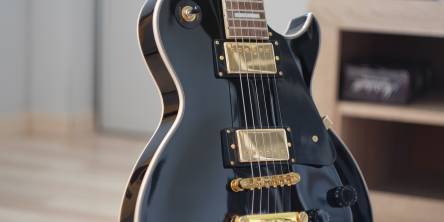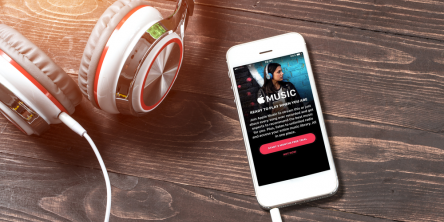The Ultimate Beginner's Guide to Choosing Your First Musical Instrument

Learning a musical instrument is one of the most rewarding hobbies you can take on. Whether you're looking to expand your creative abilities, boost cognitive skills, or simply find a new way to unwind, playing an instrument can offer all these benefits and more. But with so many different types of instruments out there, choosing the right one as a beginner can feel overwhelming. In this guide, we'll break down the key steps to help you select your first instrument with confidence and excitement.
Step 1: Consider Your Musical Preferences and Goals
Your musical taste plays a significant role in which instrument you’ll enjoy learning. Do you gravitate towards the smooth sounds of jazz, the lively rhythms of rock, or the elegance of classical music? Different instruments are naturally suited to specific genres; for instance, electric guitars are iconic in rock and blues, while the violin is a staple in classical music.
It’s also helpful to think about your personal goals. Are you interested in joining a band or orchestra, or is this a personal hobby to enjoy at home? If you’re aiming for group play, some instruments, like the bass guitar or drums, are always in high demand. On the other hand, instruments like the piano or acoustic guitar work well for solo practice and performance. Considering these preferences and goals will help narrow down the choices to those best suited to your interests.
Step 2: Assess Your Budget and Maintenance Commitment
Musical instruments vary widely in price, with beginner options ranging from affordable to high-end. For instance, basic guitars and ukuleles are relatively inexpensive, starting at around $50–$100, while even a beginner-quality keyboard or digital piano can be several hundred dollars. Brass instruments and violins often cost more as well, so it’s essential to consider your budget when starting.
Aside from the initial cost, many instruments require ongoing maintenance. Guitars need new strings regularly, brass instruments require cleaning and valve oil, and woodwinds might need reed replacements. Additionally, learning costs can add up, as some instruments like piano, violin, or saxophone may require regular lessons to master. Be sure to factor in both the initial and ongoing costs when making your decision.
Step 3: Evaluate the Physical Requirements
Playing an instrument can be surprisingly physical, so it’s important to consider any physical requirements or limitations. For example, some instruments are larger and heavier, which can be challenging for younger players or those who may have difficulty carrying weight. If you're considering something portable, like a flute or ukulele, you'll find it much easier to handle than larger options like a drum set or cello.
Some instruments also demand specific physical skills. For instance, drums require good coordination and stamina, while string instruments like the guitar require finger dexterity and callous development. Brass instruments require a certain amount of lung capacity and lip strength, which can take time to develop. Keyboards and pianos, on the other hand, are relatively easier to start with from a physical standpoint, as they require less muscle strength and no finger callouses.
Noise considerations can also play a role here. For instance, brass and drum sets are loud and might disturb others in a shared living space, while electronic keyboards offer the option of headphones for quiet practice. If you’re considering the difference between a piano and an organ, you’ll find that while both can produce a full range of sounds, an organ has sustained tones that require specific techniques, while a piano allows for both quiet and loud play depending on touch.
Step 4: Consider Ease of Learning and Skill Development
If you’re eager to start playing right away, consider choosing an instrument that’s beginner-friendly. For instance, the ukulele and keyboard are often seen as accessible starting points. The ukulele, with its small size and fewer strings, is relatively easy to learn basic chords on, making it perfect for beginners who want quick wins. The keyboard or piano is also a great choice for beginners, as the layout is visually intuitive, allowing learners to understand music theory basics easily.
Some instruments have a steeper learning curve. The violin, for example, requires a precise technique for producing a good sound and takes time to develop finger placement. Similarly, wind instruments like the clarinet or saxophone require practice in controlling breath and embouchure (mouth position). Consider how much time and effort you’re willing to invest and choose an instrument that aligns with your commitment level.
Another advantage of instruments like the keyboard is their versatility in helping you understand broader musical concepts. Keyboards provide a visual representation of music theory, which can make learning harmony and chords easier, providing a solid foundation if you decide to try other instruments later.
Step 5: Try Out Different Instruments
When possible, try out a few instruments before making your final decision. Visiting a music store can provide valuable hands-on experience with different options. A quick demo can reveal which instrument feels right, as sometimes just holding an instrument can help you feel more connected to it. This can be especially helpful when comparing different types of string or wind instruments.
Some music stores or community centers even offer beginner lessons or workshops, which can give you a practical taste of various instruments. Many teachers and musicians are also happy to offer insights and recommendations, so don’t hesitate to ask for advice on which instrument might be the best fit based on your goals and preferences.
Step 6: Make Your Choice and Start Your Musical Journey
After considering all these factors, it’s time to make a decision. Trust your intuition and the research you’ve done, and choose the instrument that resonates most with you. Remember that there is no “perfect” instrument, and every choice offers unique rewards. More than anything, the key to mastering any instrument is patience and consistent practice, so focus on enjoying the learning process.
Once you have your instrument, start exploring beginner resources. Many free tutorials are available online, and mobile apps can provide guided practice sessions. Joining a music community, whether online or in-person, can also keep you motivated and offer helpful advice as you progress.
Conclusion
Choosing your first musical instrument is an exciting step toward a lifetime of creativity and enjoyment. By considering your musical preferences, budget, physical requirements, learning curve, and even trying out a few instruments in person, you’ll be well on your way to finding an instrument that feels like a natural fit. There’s no right or wrong choice, only the joy of discovering a new way to express yourself. Now, pick up that instrument, dive in, and enjoy the journey of making music!
Similar Articles
Imagine how many DJs out there today wanting the same things as you. Imagine how many musicians work hard to be recognized and well-known in their local markets and worldwide. There are many, and they are all more than you might think.
Setting up your guitar can be a daunting task because there are so many things involved in the process. For setting the truss rod of an electric guitar you need to pay proper attention.
Producing and selling music can be quite a challenge, especially if you are a newbie in music production. The pressure to sound like an experienced professional is petty strong, despite being a music producer, on a first glance, seems like an effortless job.
Music and sports are two things that have been linked with each other for years. When you enter the gym, you can instantly hear juicy beat popping out of the speakers. Isn't that true? Listening to music while exercising is so popular because it brings many impressive benefits.
The music festival these days has a lot of things under its abode. There is a lot going on at times and all of that, plus a heavy amount of people can be very overwhelming at times. These events can also put a lot of pressure on those who generally deal with anxiety, which gets amplified in large crowds.
Android phones come with already preinstalled apps for your device, for example, Google which offers you an application of their own version Google play store. This makes it suitable for finding free music download apps for your android easier now, compared to old days.
What is rock? What is pop? If all are music how they are different? This is a question that most people ask. And the answer to this lies below.
The media industry is evolving, and the current trends show that the audiences now prefer video content to audio. Music videos can enhance the reach and effect of your band on the audience. The demand for music videos has made the role of filmmakers crucial to making successful music hits.
Why neither the brain games nor crosswords can cope with playing a musical instrument? A good guitar player can strum anything with strings; a deluxe guitar will hardly bring the results on its own. It is time to acknowledge that what we assume to be our deficiencies are largely nothing but our air constructions.









